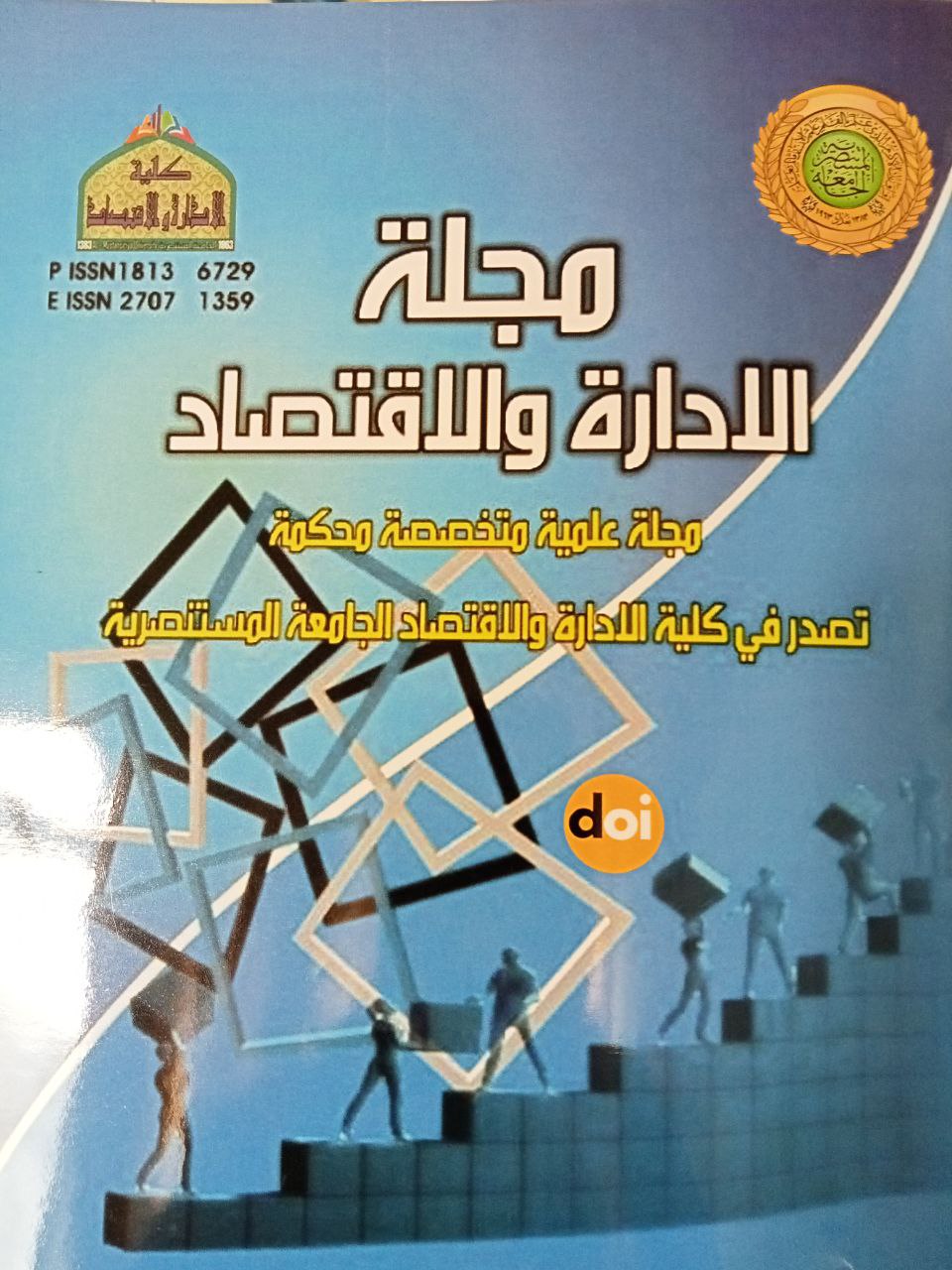The role of high containment management in modeling occupational bullying behaviors: Analytical research at the headquarters of the Iraqi Ministry of Labor and Social Affairs
DOI:
https://doi.org/10.31272/jae.i139.1076Keywords:
high containment administration, modeling occupational bullying behaviors, headquarters of the Ministry of Labor and Social AffairsAbstract
The research aims to know the role of high containment management in modeling occupational bullying behaviors, adopting an integrated approach, description and analysis in its completion. Accordingly, the research dealt with two variables: high containment management as an independent variable with its dimensions (motivation, training), and job bullying behaviors as a dependent variable and its dimensions (abuse during work, abuse of the individual, physical intimidation) to form the framework around which the study revolves. High containment management practices and occupational bullying behaviors, and framed that problem with a number of questions that were the basis for building the practical side. The research was conducted at the headquarters of the Ministry of Labor and Social Affairs as a study community. As for his sample, it was random, and it consisted of (97) managers consisting of (general managers, assistant general managers, department managers, assistant department managers, and division managers) and (205) employees, so that the final number became (302) respondents to answer the questions of the study’s questionnaire as the main tool for data collection and in order to determine the nature of And the level of the study variables and proving the validity of the main hypotheses in terms of the degree and type of correlation and the intensity of the effect. The researcher used statistical programs (AMOS V26, Excel V16, Microsoft SPSS V26) in analyzing and processing data and using many statistical methods, including (confirmative factor analysis, stability coefficient, weighted arithmetic mean) , relative importance, standard deviation, Z-TEST, F-TEST, level of significance, interpretation coefficient, Spearman rank correlation coefficient). Employing the influencing relationship of motivation and training in modeling bullying behaviors is in order to achieve the goals of the organization.
References
اولاً: المصادر العربية
اموري، هادي كاظم ، خالد ضاري الطائي ، عبدالمنعم كاظم الشكري ، الاحصاء التطبيقي اسلوب تحليلي باستخدام. SPSS، الطبعة الاولى، دار وائل للنشر، عمان، الاردن ، 2013.
إبراهيم عبد الله العثمان,2011: بناء وتعديل سلوك الأطفال, دار إثراء للنشر والتوزيع , عمان.
عبد الوهلب, مغاره( 2015): التنمر الوظيفي: مقاربة نظرية, مجلة العلوم الانسانية, جامعة منتوري قسنطينة, مجلد(ب), عدد (43).
الزيادي, مها عادل رمضان,(2022): اثر الانغراس الوظيفي والتنمر في مكان العمل على الازدهار في العمل , دراسة ميدانية على شركة الصناعات الغذائية بمدينه 6 اكتوبر, المجلد الثالث عشر. العدد الثاني.
الزبيدي، غني دحام تناي والعابدي، علي رزاق جياد، (2023)، ادارة الموارد البشرية مفاهيم ووظائف وحالات دراسية، الطبعة الاولى، مؤسسة الصادق الثقافية ، العراق.
ثانياً: المصادر الاجنبية
Ahmad Mubashir, Shahzad Naveed, Waheed Abdul and Khan Muddassar(2014), " High Involvement Management and Employees Performance Mediating Role of Job Satisfacti" , European Journal of Business and Management, Vol.6, No.31, 2014.
Gollan, P. J. (2005). “ High involvement management and human resource sustainability” : The challenges and opportunities. Asia Pacific Journal of Human Resources, 43(1), 18-33.
Harmon, J., Scotti, J., Behson, S., Farias, G., Petzel, R., Neuman, J.H., et al., (2003), "Effects of High-Involvement Work Systems on Employee Satisfaction and Service Costs in Veterans Healthcare", journal of healthcare management, 48(6).
Armstrong, Michael,(2009), "Performance Management Key Strategies and Practical Guidelines", Clays Ltd, Ives Plc, British Armstrong, Michael , (2009) , Performance Management Key Strategies and Practical Guidelines , Clays Ltd, Ives Plc, British .
Appelbaum, Steven H. Hebert, Danielle & Leroux Sylvie(2000): Empowerment, Power, Culture and Leader Ship - Astrategy or fad for The Millennium, Journal of Work Place Learning vol .11.NO.7.
Byars, Lioyd L,(2005), Human Resource Management, 7 th Ed Prentice Hall Inc,USA.
Ramsay, Harvie & Dora Scholarios & Bill Harley (2000), Employees and High-Performance Work Systems: Testing inside the Black Box, British Journal of 10- Industrial Relations, pp. 501-531.
Patah, M, O, R, A., Abdullah, R., Naba,M,M., Zahari, M, S, M., & Radzi, S,M, (2010), Workplace Bullying Experiences, Emotional Dissonance And Subsequent Intentions To Pursue A Career In The Hospitality Industry, Journal of Global Business and Economics, vol. 1, issue 1.
Ciby, M.and Raya,R.P.(2014), “Exploring victims’experiences of workplace bullying: a groundedtheory approach”,Vikalpa, Vol. 39 No. 2, pp. 69- 82.
D'Cruz, P., Noronha, E., Mendonca, A., & Mishra, N., (2018),Indian Perspectives on Workplace Bullying: A Decade of Insights. Springer.
Vogelpohl, D. A., Rice, S. K., Edwards, M. E., & Bork, C. E. (2013). New graduate nurses' perception of the workplace: Have they experienced bullying?. Journal of Professional Nursing, 29 (6), pp.414-422.
Matyók,T.,& Schmitz, C. L. (2010). A story to tell: Bullying and mobbing in the workplace. International Journal of Business and Social Science, 1 (3), pp.87-97
Karnilev Sergey Sergeyevg / Multiple Regression / 2002 / Publishing House Statistical Science Library Moscow Russian Federation / First Edition.
Doody, P.Sarah, (2007): High Involvement work systems: Their effect on Employee Turnover and Organisational Performance in New Zealand Organisations, A thesis submitted in partial fulfilment of the requirements for the Degree of Master of Commerce and Management, Lincoln University.
Oppenauer, Viktoria (2014): The Impact of High Involvement Work Systems on Employee Well –Being :The Role of Job Demands and social support, Master Thesis Human Resource Studies,Tilburg University.


